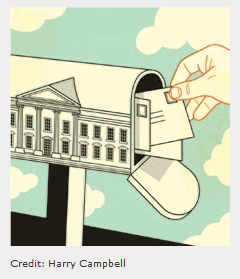
|
|
|
|
|
|
|
News & Views item - December 2008 |
![]() Policy
Advice (unsolicited) From Three Experts for the US President Elect.
(December 3, 2008)
Policy
Advice (unsolicited) From Three Experts for the US President Elect.
(December 3, 2008)
Ernest Moniz, Director of The MIT Energy Initiative, John Halamka, chief information officer at Harvard Medical School and Charles Vest, President Emeritus of MIT and President of The National Academy of Engineering have sent an open letter to US President Elect Barack Obama with a total of 13 overarching recommendations for immediate implementation on energy, health, education and R&D.
The full text is available online at https://www.technologyreview.com/business/21555/page1/
Here we list the specific recommendations.
Ernest Moniz
Implement carbon dioxide emissions
pricing, most likely through a cap-and-trade system. Charging for carbon
emissions will stimulate the market to introduce low-carbon technologies.
The cap-and-trade system should move as quickly as possible toward an
auction system, with the funds returned to the public in a progressive
manner.
Work with the private sector to provide a
portfolio of proven, cost-effective low-carbon energy technologies. Goals
should include new nuclear power plant construction, a strong renewables
program, and a program to demonstrate large-scale carbon dioxide
sequestration. Realistically, this will require a small charge on energy
supply. The scale of the program needs to be in the range of $10 billion a
year for 10 to 15 years.
Establish a mechanism for coördinating
the many interests that must influence a coherent energy policy: national
security, foreign policy, environmental policy, agricultural policy, fiscal
policy, and so on. The administration's policy position must also reflect
the legitimate and often diverging energy interests of different regions of
the country. The Department of Energy does not have the capacity to bring
together these disparate interests without help from the White House. One
option is to appoint an assistant to the president for energy, who would
work with the energy secretary.
Commit to implementing, within 10 years,
a 21st-century electricity grid that will enable development of large-scale
regional resources for renewable electricity. Introducing energy efficiency
standards for new buildings and financial incentives for retrofitting
existing buildings should be a high priority.
John Halamka
Provide incentives through Medicare for
the adoption and use of EHRs [electronic health records]. Target these
incentives so that cost savings are shared with clinicians.
Encourage insurers to provide incentives
for hospitals to adopt CPOE (computerized physician order entry). This
technology, which lets physicians communicate treatment instructions
electronically, is the most important tool hospitals can introduce to
improve their safety, quality, and efficiency of care.
Continue to provide federal funding for technology and policies that encourage interoperability between health-care providers.
Charles Vest
Use your
bully pulpit to establish a public vision of an America
that will lead and prosper in the 21st century through knowledge
and innovation.
Appoint a science and technology advisor
before your inauguration and include him or her at the highest tables of
counsel and decision making, just like the national security advisor.
Make full funding of the America Competes
Act a nonnegotiable first-term priority.
Establish a bold national initiative
engaging the private sector, academia, and government to meet our energy
challenge and mitigate the advance of global climate disruption.
Restore strong basic-research budgets to
the Department of Defense and increase the National Institutes of Health's
budget in excess of inflation.
Work with Congress to eliminate academic earmarking.